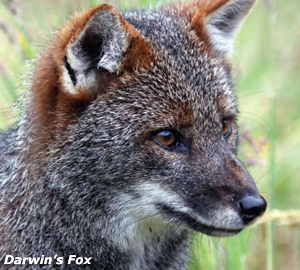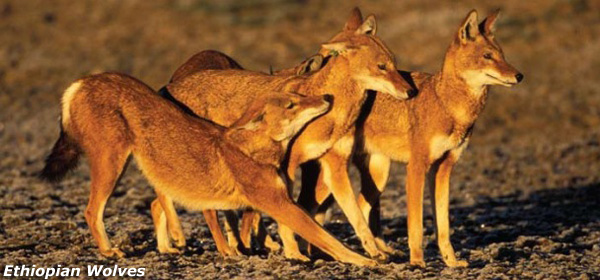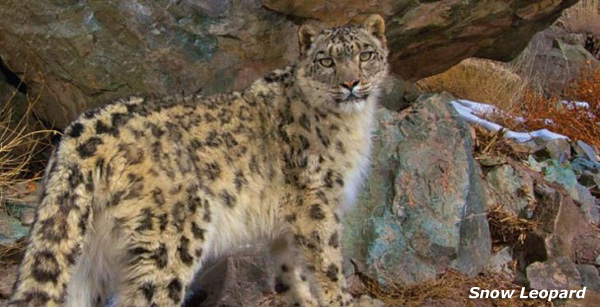The Future of Wild Cats and Dogs
Why 80 percent of their species are on the edge
 A new report today by a coalition of the world’s leading wildlife conservation organizations, shows in detail how big cats and rare dogs, including wolves and foxes, are dying off like never before.
A new report today by a coalition of the world’s leading wildlife conservation organizations, shows in detail how big cats and rare dogs, including wolves and foxes, are dying off like never before.
The report is designed to push the U.S. Senate to pass a bill they’ve been sitting on since 2004 and that’s already been passed by the House. It provides a small amount of funding to protect animals deemed by Americans to be of special global value, but who face extinction.
The report focuses on 15 species whose homes are being destroyed, whose land is being over-developed, and who are being hunted them down for personal profit. Iconic species like lions, cheetahs, snow leopards, and wild dogs like the Ethiopia wolf and bush dog are right on the edge.
These 15 species are considered umbrella species that protect their landscapes and all the other animals who depend on those ecosystems.
The Fading Call of the Wild is available here as a pdf brochure, with a foreword by the actress Glenn Close, who describes these animals as ecosystem guardians. “Not only would losing these species have drastic ecological and economic impacts,” she writes, “their loss will impact us in ways we aren’t even able yet to articulate. We are losing them due to human choices and failure to see beyond our own immediate needs. While the threats are many, there are workable and actionable solutions. Some of those are laid out here, steps we can take which can ensure a future for these animals, and the ecosystems that rely on them.”

The report outlines how:
• Lion populations in Africa have dropped from 200,000 a century ago to fewer than 30,000. They are extinct in 26 countries where they use to live. The single greatest threat to lions is killing by herders and ranchers who shoot, trap and poison lions across their range.
• There are fewer than 500 Darwin’s Fox living today. Found only in Chile, these gentle and curious canids are not afraid of people – which does not help them. But it’s the destruction of their forests that have brought them to the brink.
• Fewer than 7,000 snow leopards are alive in the wild today. They are hunted down and killed for their various body parts that sell well as rugs and fake aphrodisiacs for old men in China and throughout Asia.
• There are less than 500 Ethiopian wolves. The highly social animals live in packs, which are being wiped out by rabies outbreaks as other desperate animals migrate into their ever-shrinking lands.
• African wild dogs are extinct in 22 countries that they formerly inhabited. Fewer than 8,000 remain.
The report urges swift passage in Congress of the Great Cats and Rare Canids Conservation Act that would provide conservation assistance to the 15 species. “The act offers viable and valuable methods to ensure a safe future for these majestic animals,” says Jeff Flocken of the International Fund for Animal Welfare, one of the organizations that produced the report.

The act was first introduced in July 2004, and, like the energy conservation bill that just died in the Senate, is set to expire this year unless our senators decide to help, would offer wild cats and canids the same type of conservation help that presently supports tigers, great apes, elephants, sea turtles and other iconic species through the Multinational Species Conservation Funds, administered by the U.S. Fish and Wildlife Service. The funds were designed to conserve species deemed by Americans to be of special global value, but simultaneously endangered with extinction.
Senators Joe Lieberman (I-CT), Tom Udall (D-NM), Sam Brownback (R-KS) and Sheldon Whitehouse (D-RI) are leading the charge to usher the bill through their chamber this Congress. The House passed the measure in April 2009 with a two-thirds majority and bi-partisan support led by Reps. Jay Inslee (WA-01), Madeleine Bordallo (D-Guam) and the International Conservation Caucus. The Act is supported by more than 80 scientific, animal welfare, conservation, outdoor recreation organizations, zoos and aquariums.
The report was authored by Panthera, the International Fund for Animal Welfare, and the Wildlife Conservation Society, in cooperation with the International Union for the Conservation of Nature (IUCN) Canids and Cats Specialists Groups. You can download a copy of the report here.
